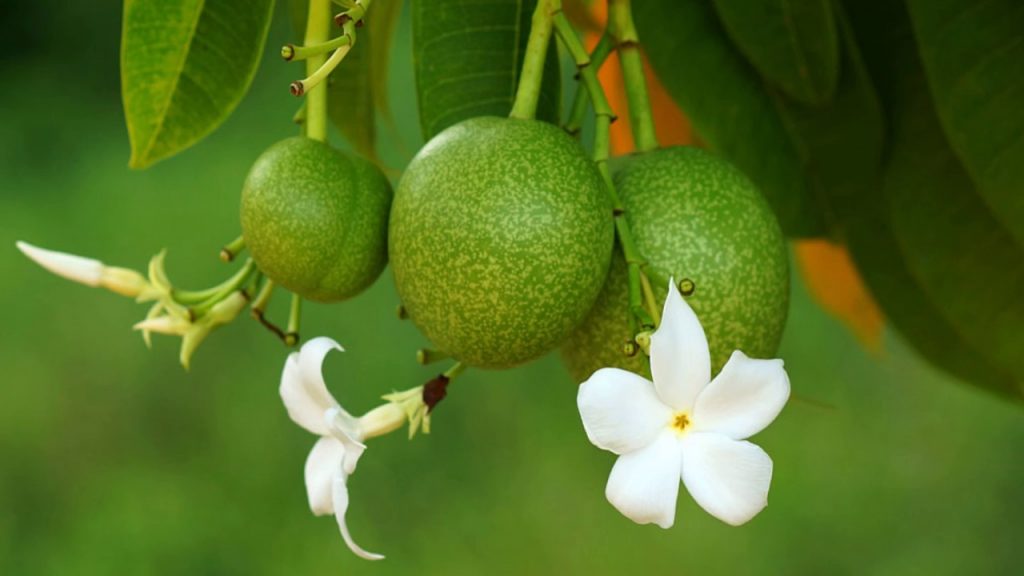Suicide tree is a tree native to India and other parts of S. Asia. It grows preferentially in coastal salt swamps and in marshy areas. It grows wild along the coast in many parts of Western Ghats and has been grown as a hedge between home compounds. It yields a potent poison, often used for suicide or murder.
Flower are white, showy, star-shaped, 5-7 cm, with a small yellow center. Leaves are 12-30 cm long, oval, dark green and glossy, held in dense spirals at the tips of the twigs. The fruit, when still green, looks like a small mango, with a green fibrous shell enclosing an ovoid kernel measuring approximately 2 cm × 1.5 cm and consisting of two cross-matching white fleshy halves.
On exposure to air, the white kernel turns violet, then dark grey, and ultimately brown, or black. The plant as a whole yields a milky, white latex. Cerbera odollam bears a close resemblance to the Oleander bush, another highly toxic plant from the same family.
The moniker “Suicide Tree” is well earned. In a ten-year study in the Kerala state of India, Cerbera odollam was responsible for 537 poisonings, half of all plant poisoning cases (2). The most popular use though is suicide, most likely because it is widely available and its lethality well know. In these cases the individuals remove the kernel from the fibrous seed husk and mash it with cane sugar, making a sweet, albeit deadly, treat.
